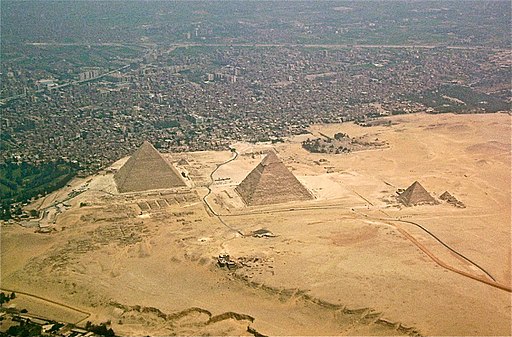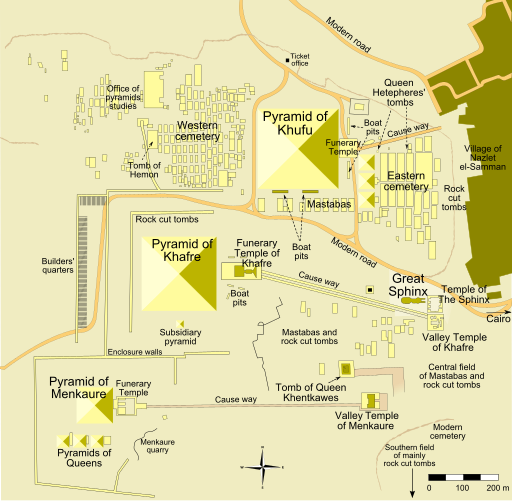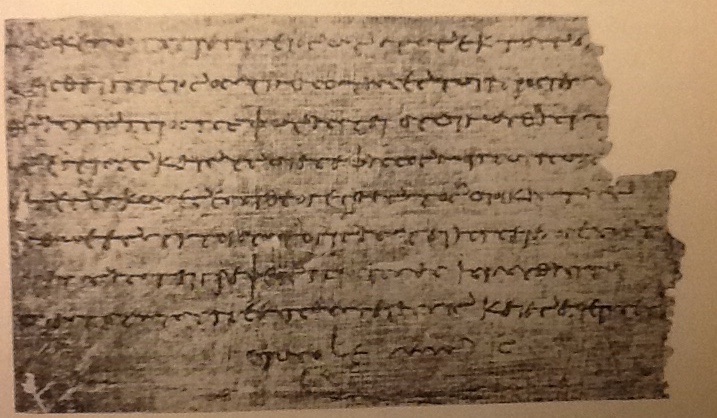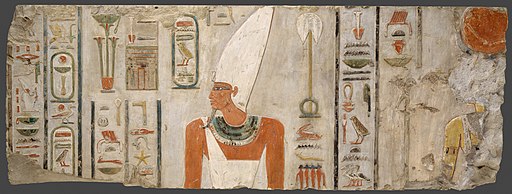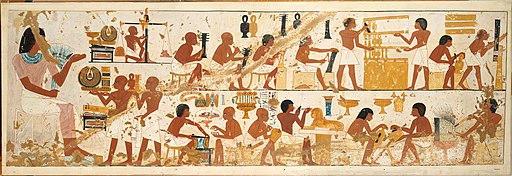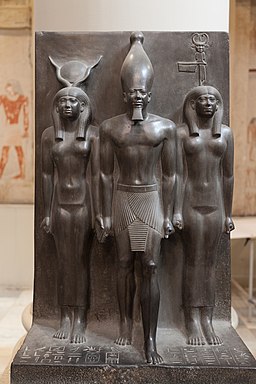Please note, that while I share videos in these lessons. I work hard on making sure that there are no copyright infringements. Every video is linked back and credited to the original creator. Without further ado, here is a summary of art of Ancient Egypt.
Short Introductory Video by National Geographic
Art Of Ancient Egypt Fun Facts
- Ancient Egyptians had no word for ‘art’ in their language. They did not think of art as we do today. Therefore, everything served a functional purpose, often in accordance with their religion. Even though we see paintings, sculpture, drawings, jewelry, and architecture, it was all meant to serve a function.
- Often art served a purpose of maintaining order, conveying law or record keeping.
- The depictions that we see throughout the civilization of Ancient Egypt show an idealized and unrealistic view of the world.
- Ancient Egyptians had elements of animal worship in their culture. Many times their gods had an animal associated with the presence.
- They had fun laws when it came to cats. You could be put to death for killing a cat. If your cat died you would have to shave your eyebrows.
Bronze Figure of Bastet, Louvre Museum, France, Rama, CC BY-SA 3.0 FR, via Wikimedia Commons
Old Kingdom: The Age of The Pyramids
Giza Pyramid Complex Seen From Above, Robster1983 at English Wikipedia, CC0, via Wikimedia Commons
Three pyramids:
Khufu – the oldest and largest, contained a boat!
Kafre – Appears larger, but only because it sits on higher ground.
Menkaure – smallest, but has three smaller queen’s pyramids.
Giza Pyramid Complex Map, MesserWoland, CC BY-SA 3.0, via Wikimedia Commons
Go on a tour of the Pyramids of Giza using Google Earth.
The Importance of Papyrus
- Papyrus was developed at the end of the Old Kingdom. There are papyrus rolls that describe the last years of building the Giza Pyramids.
- Cheap and easy to produce, but fragile.
- It grew along the Nile river, subsequently there was an abundant supply.
- Egyptians didn’t just make paper out of it, but also blankets, rope, footwear, medicine, food, clothing, furniture, and baskets. It truly was an essential resource.
Letter on Papyrus, 3rd Century BC, Charles Burton Gulick, Public domain, via Wikimedia Commons
Book of The Dead, Papyrus of Hunefer, Sheet 3, British Museum, Hunefer, Public domain, via Wikimedia Commons
The Sphinx:
The Sphinx is monolithic, which means that it was constructed of a single stone as opposed to piece by piece.
It is full of mystery. No one actually knows what it represents or who it is supposed to depict. We call it Sphinx out of convenience. However, it was not necessarily what the Ancient Egyptians called it.
Most recent research indicates that it would take 100 people 3 years to construct such a monument, using the tools that the ancient Egyptians had access to.
What was the Sphinx supposed to be by the Smithsonian Channel.
Middle Kingdom Art
- Was influenced by political unrest and war.
- Osiris was the main deity.
- They could finally turn their attention to art.
- Sculpture became more precise and accurate.
Limestone relieve of Mentuhotep II, Metropolitan Museum of Art, Public domain, via Wikimedia Commons
Jewel Osiris Family, Louvre Museum, CC BY-SA 2.0 FR, via Wikimedia Commons
Board Games in Ancient Egypt
Many of the Egyptian games reflected the person’s passage to the underworld.
The boards for Senet were 10 spots long and 3 spots white, laid out in 3 neat rows. Instead of dice, the ancient Egyptians used casting sticks or bones. The players received equal number of pieces (between 5 and 7). The goal of the game was to send all of the pieces to the end of the board. The game was strategic and fun. You could block the competition from moving forward, or block them, and, finally, even send them backwards.
Game of Senet, Brooklyn Museum, Charles Edwin Wilbour Fund, No restrictions, via Wikimedia Commons
Nefertiti Playing Senet, Maler der Grabkammer der Nefertari, Public domain, via Wikimedia Commons
Comparatively, the Game of Hounds and Jackals was less strategic, and more of a game of chance. Each player had 5 pieces, either with jackal heads or hound heads, the goal was to move the pieces from the starting position to the larger space at the end of the board.
Game of Hounds and Jackals, Metropolitan Museum of Art, CC0, via Wikimedia Commons
More Fun Facts
Because there was no word for ‘art’, most artwork was created in a workshop like setting, with multiple artists working on the same project. Therefore there are no singular artists that stand out in the Egyptian history.
Craftsmen, Tomb of Nebamum, Metropolitan Museum of Art, CC0, via Wikimedia Commons
Most art in Ancient Egypt reflected heavily on death, rebirth, and afterlife.
The Egyptian art style went largely unchanged in the 3000 years, except one brief period during the Amarna period. It also influenced the civilizations that came after.
Greek Kouros, Metropolitan Museum of Art, CC0, via Wikimedia Commons
Triad Statue of Pharaoh Menkaura, en:User:Chipdawes, Public domain, via Wikimedia Commons
Amarna Art
- Occurred during the New Kingdom Period, when pharaoh Amenhotep changed his name to Akheneten, moved the capital to Amarna, and declared that the religion will now be monotheistic, and only worship the god Aten, represented by the sun.
- In contrast to the accepted art style, Amarna period challenges the old standards. It does so by creating art that has movement, facial expressions, different colors and busy and crowded themes.
- During Amarna Art period, there are often seen a sort of elongated heads and detailed toes, and comfortable, relaxed poses.
- The bust of Nefertiti is one of the most famous examples of Amarna Art.
Bust of Nefertiti, Neues Museum, Berlin, Philip Pikart, CC BY-SA 3.0, via Wikimedia Commons
Two of Akhenaten’s daughters, Nofernoferuaton and Nofernoferure, c. 1375–1358 BC, Ashmolean Museum, Oxford, Ägyptischer Maler um 1360 v. Chr., Public domain, via Wikimedia Commons
New Kingdom
- Tutankhamun, son of Akhenaten, inherited the throne at 8 or 9 years old.
- During his reign, he removed all remnants of his father’s artistic legacy (Akhenaten and Amarna art), and restored previous order.
- Tutankhamun ruled in Egypt for only about 9 years.
- He had a multitude of diseases, and died young, at about 18 to 19 years of age. There are several theories as to why he died: as a result of fractured bone, infection, malaria.
- The Mask of Tutankhamun is probably the best known work of art in the world.
Mask of Tutankhamun, Egyptian Museum, Cairo Roland Unger, CC BY-SA 3.0, via Wikimedia Commons
Video tour of the Tutankhamun Exhibit by Saatchi Gallery in London.
Colors and Materials used in Egypt.
- Red: desher – represents life, but also evil and destruction. It was associated with vitality and energy, but also blood, fire, and danger. Made from oxidized iron, and red ocher (clay rich in iron deposits)
- Blue: irtiu – certainly was the most popular color, symbolizes birth, fertility, water and heavens. Made from copper and iron oxides with silica and calcium.
- Yellow: khenet – Symbolizes the sun and eternity. Originally made from ocher and iron, but later out of arsenic.
- Green: wadj – Symbolizes goodness, growth, life, afterlife and resurrection. The opposite or red. Made from malachite and copper oxide.
- White: hedj – Represents purity and clarity. Made of chalk mixed with gypsum.
- Black: kem – Symbolizes death and darkness but not evil. Made of charcoal.
Assignment
Pick a functional object, and turn it into art.
Imagine living in a time when there is no art for the sake of art, and all the art had to serve a functional purpose. Firstly, I want you to look around your house. What object do you use daily that you feel is essential to your day to day routine? However, we are going to skip technology on this assignment, and look at more common objects. For example, you can use piano for this purpose, but not your cell phone.
Now that you picked your functional, daily used object, I want you to draw it and make it look like the object you are drawing is indeed art. You can add things to it, or take something away, but the functionality has to remain, so it can be a complicated and elaborate cup, but it still has to remain a cup. Further, you can make it as elaborate as you wish, using any supplies you have on hand.
Finally, as you are working on this, I want you to think about the colors you are choosing and their symbolism in Ancient Egyptian times.
More links and resources
Explore the Pyramids of Giza through google Earth
Photos of objects from the Tutankhamon Exhibit
Read more about the board games of the Ancient World
Egyptian Art In Middle Kingdom

